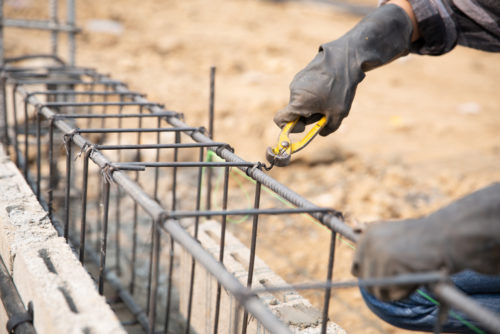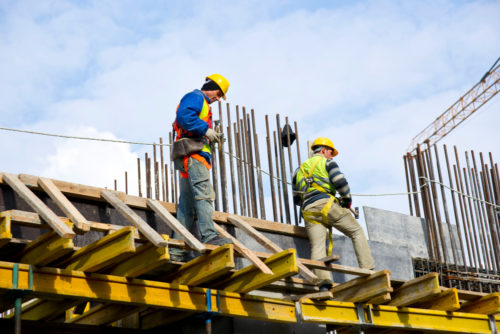 Construction is the backbone of civilization, shaping the built environment we inhabit and driving economic growth and development worldwide. From towering skyscrapers, sähkötyöt and intricate infrastructure projects to residential homes and commercial buildings, the construction industry encompasses a vast Sähköauton laturin asennus array of disciplines, technologies, and methodologies. In this detailed article, we will delve into the multifaceted nature of construction, its pivotal role in society, and the myriad factors influencing its trajectory.
Construction is the backbone of civilization, shaping the built environment we inhabit and driving economic growth and development worldwide. From towering skyscrapers, sähkötyöt and intricate infrastructure projects to residential homes and commercial buildings, the construction industry encompasses a vast Sähköauton laturin asennus array of disciplines, technologies, and methodologies. In this detailed article, we will delve into the multifaceted nature of construction, its pivotal role in society, and the myriad factors influencing its trajectory.
The Significance of Construction:
- Building Infrastructure: Construction is essential for creating the infrastructure that underpins modern society. Roads, bridges, airports, puitbrikett, tulekaitsevahend holz prof, railways, and utilities form the lifelines of transportation, commerce, and communication, enabling the movement of people, goods, and services on a global scale.
- Shaping Urban Landscapes: Skyscrapers, residential developments, and commercial complexes define the skyline of cities around the world. Construction projects not only accommodate urban populations but also contribute to the architectural identity and cultural vibrancy of urban environments.
- Economic Growth and Employment: The construction industry is a major sähköpalvelu Kirkkonummi contributor to economic growth, generating employment opportunities and stimulating economic activity in ancillary industries. Investment in construction projects creates a ripple effect throughout the economy, supporting businesses, suppliers, and service providers.
- Innovation and Technological Advancements: Construction is a dynamic and innovative industry that constantly evolves to meet the demands of a changing world. Advances in construction technology, materials science, and building techniques are driving efficiency, sustainability, and safety across the sector.
Key Components of Construction:
- Design and Planning: The design phase of a construction project involves conceptualizing the structure, developing architectural and engineering plans, and obtaining necessary permits and approvals. Detailed planning ensures that projects meet regulatory requirements, budget constraints, and client expectations.
- Materials and Methods: Construction materials range from traditional materials like concrete, steel, and wood to innovative composites, polymers, and sustainable alternatives. Construction methods vary depending on project requirements, with techniques such as traditional construction, modular construction, and prefabrication gaining prominence.
- Project Management: Effective project management is crucial for the successful execution of construction projects. Project managers oversee scheduling, budgeting, procurement, and coordination among various stakeholders to ensure projects are completed on time, within budget, and to the required quality standards.
- Safety and Compliance: Safety is a top priority in the construction industry, given the inherent risks associated with working at heights, operating heavy machinery, and handling hazardous materials. Strict adherence to safety protocols, regulatory standards, and quality control measures is essential for preventing accidents and ensuring worker welfare.

Emerging Trends and Future Outlook:
- Sustainability and Green Building: With growing concerns about climate change and resource depletion, sustainable construction practices are gaining momentum. Green building initiatives prioritize energy efficiency, renewable materials, and environmentally friendly designs to minimize environmental impact and promote long-term sustainability.
- Digital Transformation: The digitalization of construction processes is revolutionizing the industry, enabling real-time collaboration, data-driven decision-making, and enhanced project visibility. Technologies such as Building Information Modeling (BIM), drones, augmented reality, and Internet of Things (IoT) sensors are transforming how buildings are designed, constructed, and maintained.
- Offsite Construction and Prefabrication: Offsite construction methods, including prefabrication, Toruabi Tallinnas and modular construction, offer efficiencies in cost, time, and quality. Prefabricated components manufactured in controlled factory environments can be assembled on-site, reducing construction time and minimizing waste.
- Resilient Infrastructure and Disaster Preparedness: The need for resilient infrastructure capable of withstanding natural disasters and climate-related hazards is driving investments in disaster preparedness and risk mitigation strategies. From flood-resistant buildings to earthquake-resistant structures, resilience is becoming a priority in construction planning and design.
Specialized Disciplines:
Construction encompasses a wide range of specialized disciplines, each with its unique skill sets and expertise. These include architecture, civil engineering, structural engineering, mechanical engineering, electrical engineering, and construction management. Collaboration among these disciplines is essential for the successful planning, design, and execution of construction projects.
Types of Construction:
Construction projects can be broadly categorized into several types, including residential construction (single-family homes, apartments, condominiums), commercial construction (office buildings, retail centers, hotels), industrial construction (factories, warehouses, manufacturing facilities), infrastructure construction (roads, bridges, airports, utilities), and institutional construction (schools, hospitals, government buildings).
Construction Methods:
Various construction methods are employed depending on the project’s requirements, budget, timeline, and site conditions. Traditional construction involves on-site assembly of components, while modular construction involves prefabrication of building modules off-site and their assembly on-site. Other methods include design-build, construction management, and integrated project delivery (IPD), each with its advantages and limitations.
Materials and Technologies:
Construction materials play a crucial role in determining a project’s durability, cost-effectiveness, and sustainability. Common construction materials include concrete, steel, wood, brick, glass, and various composites. Putkityot Rauma Advancements in materials science and construction technology have led to the development of innovative materials such as carbon fiber, engineered timber, and self-healing concrete, as well as technologies like 3D printing, robotics, and virtual reality.

Regulatory Framework:
Construction projects are subject to a complex regulatory framework that includes building codes, zoning regulations, environmental regulations, and safety standards. Compliance with these regulations is essential to ensure that projects meet legal requirements and adhere to best practices in construction, safety, and environmental stewardship.
Project Lifecycle:
The construction process typically follows a project lifecycle that includes several phases: initiation, planning, Lei number design, procurement, construction, and closeout. Each phase involves a series of activities, tasks, and milestones aimed at achieving project objectives, managing risks, and delivering quality outcomes. Effective project management is critical for coordinating activities, managing resources, and mitigating risks throughout the project lifecycle.
Global Construction Industry:
The construction industry is a significant contributor to the global economy, employing millions of people and generating trillions of dollars in economic activity each year. While construction practices vary by region, Tampere, Kokkola, country, and cultural context, common challenges faced by the industry include labor shortages, supply chain disruptions, regulatory constraints, and sustainability concerns. Collaboration, innovation, and knowledge sharing are essential for addressing these challenges and driving positive change in the construction industry.
Construction and kolimine is a dynamic and indispensable force that shapes the world we live in and lays the foundation for future generations. As we navigate the complexities of urbanization, population growth, trükikoda tln and environmental challenges, the construction industry stands at the forefront of innovation, creativity, and progress. By embracing sustainability euroalused, leveraging technology, and prioritizing safety and quality, construction professionals are poised to build a brighter, more resilient future for communities around the globe.
Sähkömies in Finland. Sähköasentaja Kokkola
https://www.sahkoasennushelsinki.fi
Autodehooldus
Lepatriinu tee 8, Jälgimäe
[email protected]
https://www.autodehooldus.ee/
+372 511 6107
Putkimies Joensuu
Merimiehenkatu 45, 80100 Joensuu, Finland
044 722 0863
[email protected]
https://www.putkimiesjoensuu.fi/